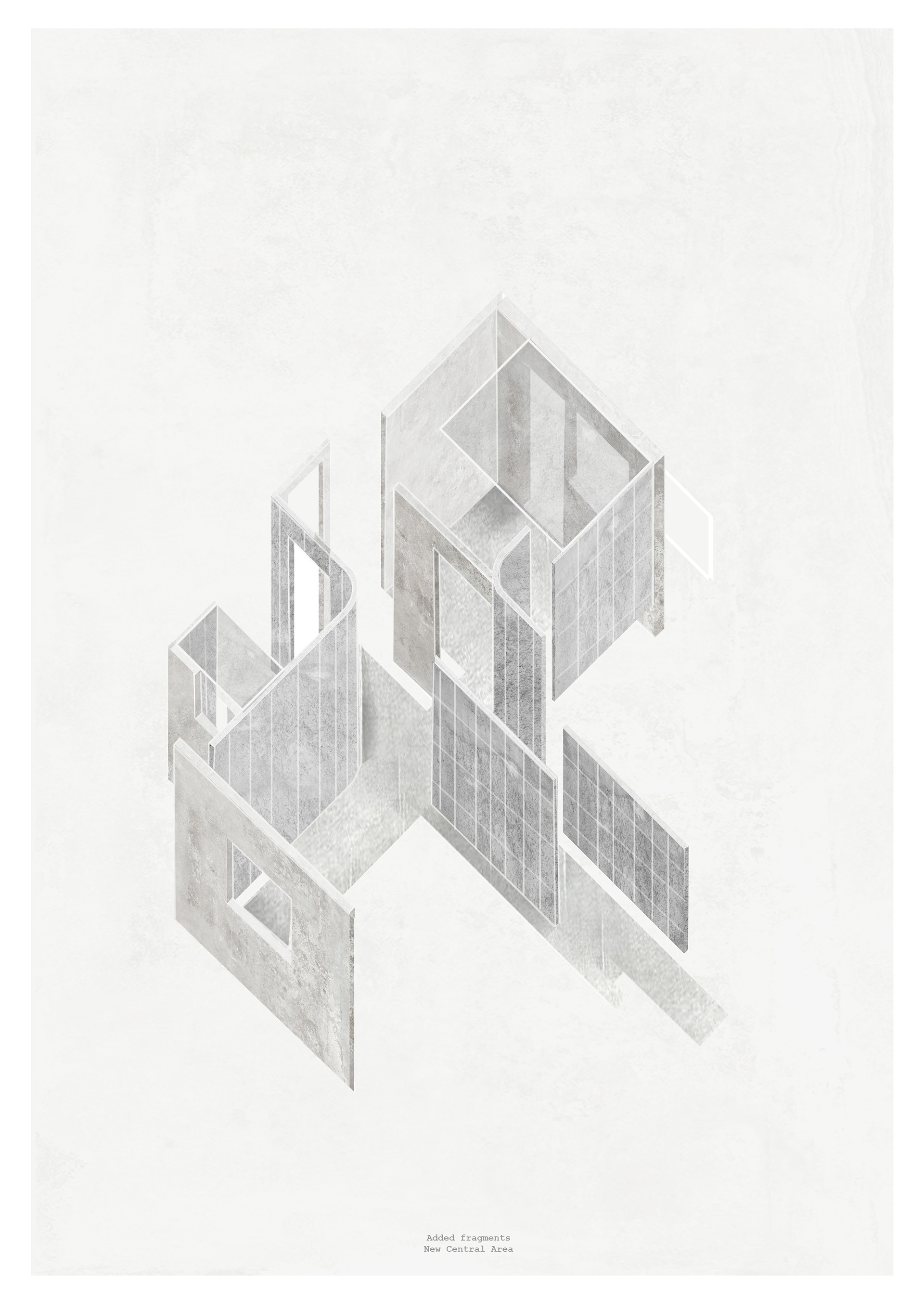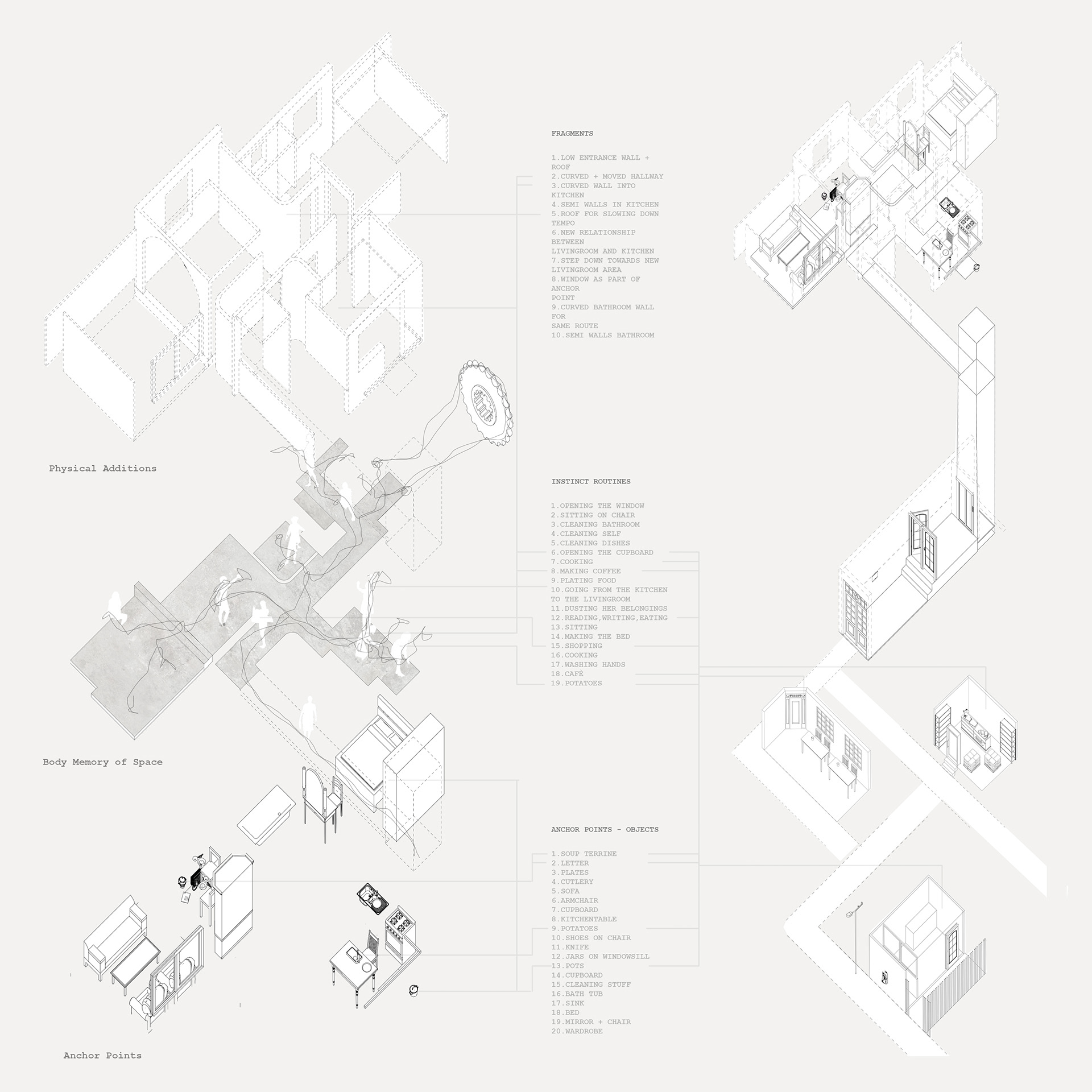Antonia Myleus
Master's Level (Year 2)
Master's Level (Year 2)
A home can be a physical place but also a concept or an idea, which often materialises into a feeling constructed by your cognitive mind rather than the actualities of your physical surroundings, forming the basics of a shelter.
The feeling of home can perhaps be described as a ‘value of belonging and intimacy on scales that range from the body to the world’ (Angelova, 2010). Home is where privacy is bought, temporal changes are recognized, where patterns, changes and daily routines all occur parallel to each other and ‘where the personal experiences reach its epitome’ (Bachelard 1958). The home can also be explained as a container of memories and things as well as the entrance to one’s soul and fragmented mind.
I believe that home is not only connected to a certain location, but that your social relationships, collected things, fragments of previous dwellings and memories help constitute the overall feeling of ‘being at home’. I believe that you always carry fragments and memories of previous dwellings with you, it’s a cognitive memory which makes up your current view on spaces and your surroundings.
The feeling of home does not only relate to your mind but your collected belongings that you move with you. Things relate to past experiences and past dwellings, they help you to mentally organize spaces. Home does not only relate to memories and things, but also the neighbourhoods and collections of spaces in your milieu. They relate to your daily routine, where your social network is, thus home is also the journey of returning to a place, a sense of bodily crossings in terms of thresholds.
What does memory in terms of home mean, and how do we define it?
One way is in relation to the body, ‘our memories are products of our body’s experience of physical space’, it manifests in our routines, daily lives and how we inhabit space. There is no memory without body. The body influences the mind just as the mind influences the body. Memories happens through our experiences and actions, they are the result of our collected and lived memories manifested into your everyday actions and routines, your routines also create a future by the doings of things and relating to the spaces around you.
One way is in relation to the body, ‘our memories are products of our body’s experience of physical space’, it manifests in our routines, daily lives and how we inhabit space. There is no memory without body. The body influences the mind just as the mind influences the body. Memories happens through our experiences and actions, they are the result of our collected and lived memories manifested into your everyday actions and routines, your routines also create a future by the doings of things and relating to the spaces around you.
I chose the film ‘Jeanne Dielman’ by Chantal Akerman, which showcases a ‘cinematic representation of the duration, tempo and rhythm of Dielman’s every day to day life’, the movie spans across 3 days in her life. The protagonist is a housewife, she has a very extreme routine where certain actions and things start to penetrate her routine.
The story is secondary to what I want to investigate in, I am foremost looking into her way of inhabiting her own home, what the reoccurring events are and which things are loaded with meaning. * This study aims to understand the possible relationship between the construction of memories through a daily routine and the physical environments where these are played out, imagining her home as a container of memories with have permeable and fragile points.
The implementation of memories in a space is formed by your collective experiences, routines and ways of relating to a space, but how do you extract memories from a place? I studied what constitutes the ‘feeling’ of a home by filling in the gaps of her fragmented apartment. The physical existing fragments relates to her bodily relations to her spaces, her daily routine and her belongings, but what completes the ‘feeling of home’?
When moving through spaces, the mind rarely thinks of spaces in terms of floor plans but instead, as a series of linear spaces. Your actions depict the spaces, where the physical surroundings merely form a background. Thus, I am investigating how much is actually needed to form the basics of ‘feeling at home’, what’s important in terms of visual connections, height of walls, size of the roof, openings and floor? By doing this, I am hoping to find how this new formed relationship affects her routine, speculating how a new spatial relationship could be formed. What parts of the apartment would be used? What parts could again be removed? Which spaces need to stay permanent and private?
This process of fragmenting the apartment from her body’s experience through her routines, filling in the gaps with new physical interventions, looking at her new way of relating to her space, fragmenting it once more, and filling in the gaps again, I hope can potentially start to inform me what you actually bring with you in terms of memories, i.e, how you extract them? What is actually forming the basis of home and what to you bring with you? Then comes a final question, how do you allow room for expansion?















